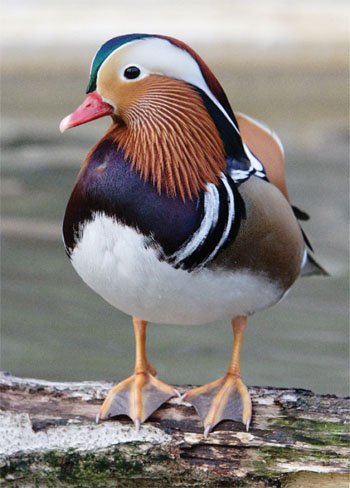Mandarin Duck
Created on Day 5
on April 26, 2012This bird is not hunted for food because it has a bad taste.
Design

This bird is not hunted for food because it has a bad taste. This feature may have been part of its Creator’s design to help protect it from predators after the Fall.
Features
- The multi-colored male mandarin duck has gray, green, black, and brown upperparts with white underneath. It has orange and cream feathers with a broad patch of white around its eyes. It also has a pair of orange-gold feathers that are raised vertically along its back and a red beak with a light tip.
- The female mandarin duck is more muted and gray in appearance with a white band around the eyes, and a narrow white line behind her eyes. Her belly is whitish.
Fun Facts
- The mandarin duck lays its eggs high in a tree cavity, usually over water, sometimes up to 30 ft (9 m) above the ground.
- After the chicks hatch, the mother will call to them from the ground, and they will jump to the ground in order to search for food. Don’t worry, the great fall does not seem to hurt the chicks.
- This species’ numbers are declining due to habitat destruction and exportation in vast numbers over many years.
CLASS: Aves (birds)
ORDER: Anseriformes (waterfowl)
FAMILY: Anatidae (ducks, geese, and swans)
GENUS/SPECIES: Aix galericulata
Size: About 8–10 in (20–25.4 cm)
Weight: Male 1.5 lbs (0.7 kg); female 2.5 lbs (1.1 kg)
Diet: Plants and seeds, as well as insects, small fish, and land snails
Habitat: Breeds in Siberia, China, and Japan; winters in the forests of southern China and Japan;
some are also found in England, where they were introduced
Aquarium Guide
With fun facts about more than 100 animals, this long-awaited Aquarium Guide includes beautiful pictures and reveals the incredible facts and design features that point to our amazing Creator. This handy size guide is excellent for school field trips and family trips to your favorite aquarium!
Browse Kids Book- © 2024 Answers in Genesis
- Privacy Policy
- Contact
- About

